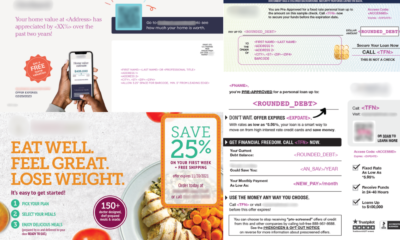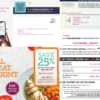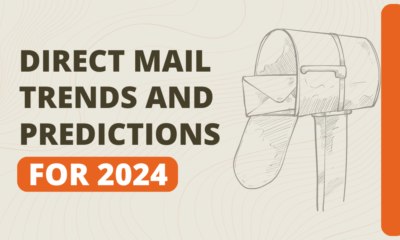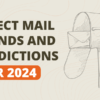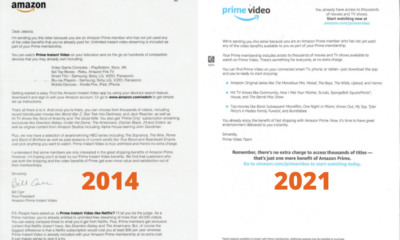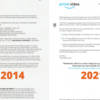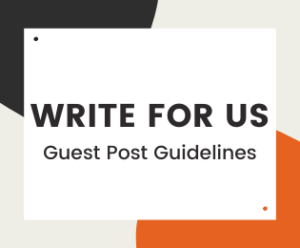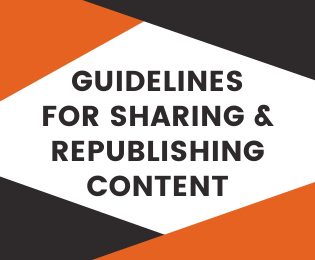RESEARCH & REPORTS
Direct Mail Trends and Predictions for 2023
We interviewed direct mail experts from a variety of companies and collected their thoughts on what the world of direct mail marketing will be like in 2023.
Over the past 12 months, the direct mail marketplace continued to adjust to several new normals in the recovery from the pandemic and recession. Fortunately, we have once again been honored to receive valuable insights from our panel of experts, which we included in this article.
They come to us from our “Meet the Mailers” video series. Throughout 2022, we interviewed direct mail professionals from a variety of companies. Their expertise and experience shape their thoughts on how the world of direct mail marketing will shake out in the year (or more) ahead. We thank each of them for sharing their thoughts and opinions with you, our audience. We invite you to check out these conversations!
1. Supply Chain and Costs
There are challenges as it relates primarily to supply chain and paper, and availability, and all of those things, and, obviously, the USPS has some of its own challenges.
 Greg BogichCEO
Greg BogichCEO
Mspark
What I see is pressure on mail given postal increases and rising paper cost and everything, that trend is gonna continue …What it means is I’m gonna have to use mail for when it really matters.
There’s pressure that it’s not ecologically positive, even with recycled paper, there’s some environmental concerns. So I think mail’s under pressure … but when used right — it’s a powerhouse.
 Russell KernCEO
Russell KernCEO
KERN Agency
We might start seeing some of the financial mailers taper off their volumes a little bit …
I still think a lot of the other channels are gonna still rely on mail. The non-profit space, retail space … their volumes will sort of maintain, but it’ll be interesting to see what the financial markets do based upon the economy.
 JOSH MCCAULLYHead of Data
JOSH MCCAULLYHead of Data
GrayHair Software
2. Flexibility and Options
[T]here’s always that challenge or tendency maybe that somebody gets caught up with a particular type of paper or a stock or whatever it might be. And I would encourage you as a marketer to be flexible and to be open to options.
So while there might be a particular stock that you really like because it has these features or looks like it has a texture, whatever it might be, maybe that can be duplicated through the printing process so it’s simulated. You don’t want to get, you don’t want the paper inventory problem to get in the way of your program.
 Mark DeBellisPresident, Financial Services Team
Mark DeBellisPresident, Financial Services Team
Westamerica Communications
I think the future looks bright. We’re not an advocate that digital is worthless. We’re saying use them together. Test, test, test, test, test. And if you’re happy with the results, do it again.
If you’re not, OK, we’ll still try to get you to do it again.
 Brad KuglerCEO
Brad KuglerCEO
Direct Mail 2.0
Testing and being ready to adapt to new conditions is a skill that has been taken to new levels over the last few years. Always working to better your marketing is a necessity.
3. Larger Postcards
I’m seeing a lot of … oversized postcards and what I call postcard flats, which is a single heavy stock piece that’s maybe anywhere from 6”x10-¾” up to a full flat size seem to be pulling rather well for marketers.
 Dean BakerCEO
Dean BakerCEO
The Phoenix Group of Companies
If you have a successful 4”x6” postcard program, it’s relatively a light lift to transition that to a 6”x9” piece, give everything a little bit more breathing room, maybe include something that you’ve wanted to include historically, but you thought it was going to be a little bit too crowded.
And now you have something in your mail piece that literally doesn’t cost you much more than your4”x6” did, if anything, and it is taller and wider than your letters that are in your inbox. People are going to notice it.
 Summer HahnlenSenior Director of Customer Success
Summer HahnlenSenior Director of Customer Success
Lob
Larger postcards give you more room for your message, headlines, images, and response channels like QR codes to stand out to consumers. First Class campaigns have been able to qualify for presort rates since August 2021.
3. Personalization/VDP
Variable data printing I think is going to be used more and more as personalization becomes more attainable to all brands.
One of the things we’re trying to do … is to give this level of data to companies regardless of size. It doesn’t have to be thousands, it can be 10.
 Jessica AkinwaleCo-Founder
Jessica AkinwaleCo-Founder
TRAK Data Inc.
4. Inkjet Printing
We’re getting variable content on really nice looking sheets of paper, and printing it like 50,000 pages an hour. So, you know, this is really allowing us to take those highly personalized programs and scale them up to much larger volumes than what would’ve been possible in the past.
 Dean BakerCEO
Dean BakerCEO
The Phoenix Group of Companies
Well, the fact that personalization will continue to be a big factor, I think that that plays a big role – how ready you are. One of the things that the new inkjet technologies allow us to do is play real big time with data and variable components.
 Nelson Penalver
Nelson Penalver
Executive Director Sales
PCI
The trend that’s happening in direct mail is very high-tech. We have a couple of printers at one of our facilities that are worth over a million dollars apiece. [W]e have spent big numbers in our data management platform for our clients that’s as high-tech as it gets. And [some] people just don’t get it and don’t see it, don’t know, what we’re capable of in direct mail and in variable print these days.
 Jen DeBuhrBusiness Development Manager
Jen DeBuhrBusiness Development Manager
Leading Response
Investments in new presses that allow more use of personalized data give you more flexibility with your campaigns.
5. Data Analytics
Data is probably the biggest thing I see as the next big leaps to maybe make in figuring out: what are people doing with their first party data? Are you aggregating second party data? Third party data? How are you using that? What’s gonna happen with privacy laws and not allowing you to do some of these things? Data is the spot where we have to focus our attention on, making sure that that data is driving all of our activity.
 Mark DeBoerSenior Vice President of Sales
Mark DeBoerSenior Vice President of Sales
Darwill
You know, that’s really the trend that we’re seeing. We have more people raising their hand to talk to us about using data and analytics.
 RICK ELLIOTTData-Driven Marketing Expert
RICK ELLIOTTData-Driven Marketing Expert
Taylor Corporation
The cost pressures that don’t seem to end give you more incentive to clean up and analyze your data.
6. Triggered Programs
I think being able to time your mail, so that when somebody’s having an online experience and then very shortly after, you’re able to reach them at the right time with maybe a more personalized or more standout direct mail piece … I think that that’s where we’ll see direct mail grow.
 Brianne BaggettaSr President & CEO
Brianne BaggettaSr President & CEO
The Mailworks
[I]t’s about increasing your ROI. It’s about being a smart marketer, and I think there’s a lot of different ways to interpret what that means, but I think it’s looking at your programs and taking a step back from them and thinking to yourself:
-“Am I running this program this way because it’s the way that it’s always been done?”
-“Should I challenge myself on that? Should I think about a way to create a triggered program where it’s literally less effort for myself, but it is going to drive a higher ROI, because it’s reaching the customer in a more timely manner? Am I partnering with the right organizations?”
 Summer HahnlenSenior Director of Customer Success
Summer HahnlenSenior Director of Customer Success
Lob
The number of advantages for mailing smarter continues to grow as the technology to use them also grows.
7. Multichannel/Omnichannel
More channels, more quickly … we are seeing huge benefits right now in co-targeting, meaning when you deliver a direct mail package to someone also being able through some high-level identity resolution tools to be able to deliver an email, a targeted social ad, a targeted display ad, and maybe even a connected TV ad, so that donor experiences your organization in like a 360-degree way. Now it might muddy your attribution and your direct mail may not get all the credit. But your overall revenue lifts. So I think that’s a really big trend that’s not gonna go away.
 Andrew Olsen, CFRE
Andrew Olsen, CFRE
Senior VP
DickersonBakker
What we believe the future of direct response to be … [is] a very prospect-centered, prospect-focused marketing strategy …where the most important thing is developing this audience that we’re all ultimately confident are the best people to hear about this product or service or hear from this client.
And then the channel becomes less relevant. And it’s not to say we’re moving away from mail. We still fully believe mail to be not only an anchor, if not the anchor to a broader strategy … the delivery mechanism for all of these things is becoming increasingly online and increasingly programmatic … we’re really gonna move a little bit away from campaign-to-campaign and mail plus a little digital integration to a more holistic view of “these are our prospects”.
 ERIK KOENIGPresident & Chief Strategist
ERIK KOENIGPresident & Chief Strategist
SeQuel Response
Again, like nearly all of the other trends, using direct mail along with other channels is an important goal for almost any company or nonprofit because it’s good for the bottom line.
8. Informed Delivery
Informed Delivery is also useful in both channels, whether it comes to marketing or servicing because you’re giving people another way to interact. Instead of having to rely on that mail piece, they may prefer to get the mail piece, but wanna interact with you digitally. So you’re giving them that method to click on digitally.
And the other good thing about Informed Delivery is that … because the postal service is curating that list and you’re able to take advantage of it, you may be able to get an email to somebody that you weren’t able to get to them before.
 JOSH MCCAULLYHead of Data
JOSH MCCAULLYHead of Data
GrayHair Software
How successful is USPS Informed Delivery? It now has over 52 million users. And in one week, 24,000 campaigns were run. As in past years, the post office in 2023 will offer a 4% discount on registered Informed Delivery campaigns.
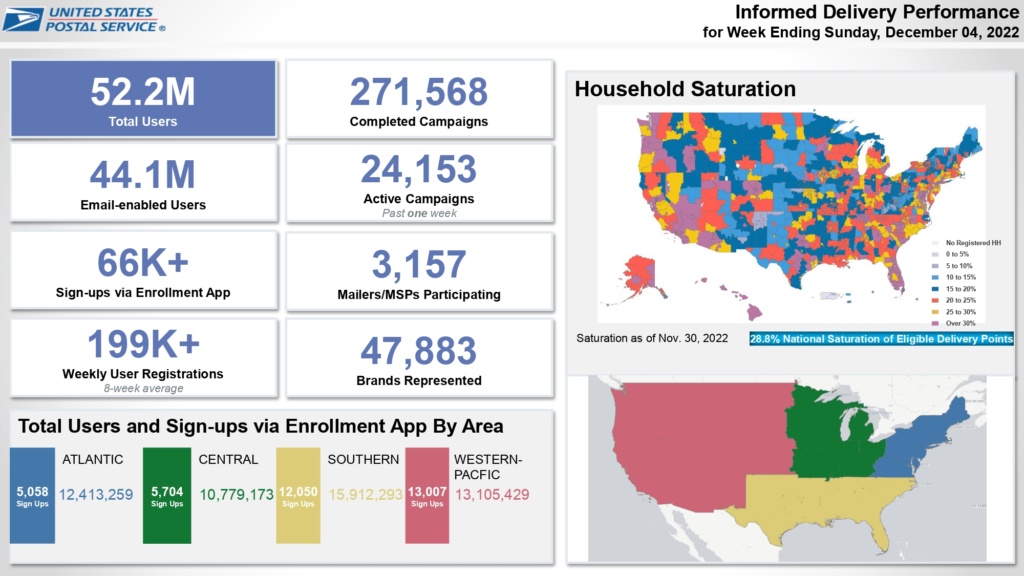
Final Thoughts
If there’s one thing that’s common to all of the experts we talked to, it’s that all face difficult challenges in uncertain economic times. At the same time, all are still committed to continue using direct mail to reach customers and prospects. They know that mail has important strengths that make it one of the best communications channels available today and in the future.














